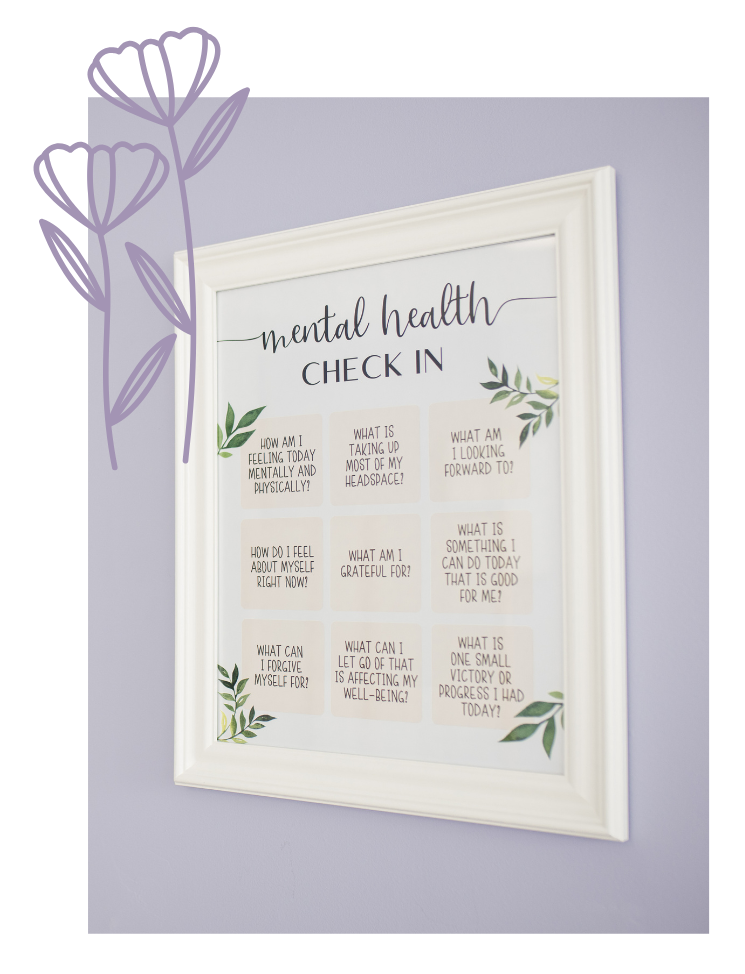
Psychotherapy and EMDR Therapy
Psychotherapy and EMDR Therapy to help you heal from traumatic experiences so you can live more fully in the present.
Do you find yourself stuck in old, unhelpful patterns, feeling like you’re repeating the same mistakes over and over again?
EMDR therapy can help you identify the connections between past experiences - whether traumatic or not - and the challenges you’re facing today. By specifically targeting and reprocessing these events, emotional distress can be reduced, and negative symptoms can be alleviated.

“We Repeat What We Don’t Repair”
-Christine Langley-Obaugh
It is completely understandable to feel hesitant about revisiting painful memories. It might feel safer to keep those experiences in the past. You may have felt as though you were coping well and you thought that you were “over it”.... until you realized that you weren’t.
Signs of unhealed trauma can include PTSD symptoms, intrusive thoughts and images, nightmares, and feeling on edge. You may also experience emotional symptoms like anxiety, depression, mood swings, and low self-esteem, as well physical effects such as troubles sleeping, or self-destructive behaviours.
Unprocessed trauma can also affect how you show up in your personal and professional relationships, leading you to act in ways that don’t align with the person you want to be. Addressing and processing the traumas that have affected you can create space for healing and personal growth.
How Can EMDR Therapy Help With Trauma?
The impact of trauma-triggers are reduced, so you experience a reduction in negative symptoms.
Being triggered by something in the present (a song, a person, a place etc.). Feeling fear, panic or anxiety.
Experience adaptive shifts while doing EMDR processing to alleviate negative beliefs about self.
Experiencing guilt, shame, or other negative feelings or beliefs about yourself.
EMDR allows you to reprocess past events (whether trauma-related or not) that are keeping you living in the past.
You feel as though your past continues to control your present. You feel stuck and confused.
EMDR Therapy Sessions
EMDR is a well-researched and widely recognized form of trauma therapy that stimulates natural healing in the brain. By focusing on specific elements of painful events (images, thoughts and beliefs, and body sensations) while at the same time remaining connected to the present moment through bilateral stimulation (eye movements or body tapping), the nervous system can shift out of fight, flight, or freeze mode to a place of safety and healing.
Although EMDR does not have the power to eliminate a memory, it can help you change the way you perceive the memory and can reduce the negative hold events from the past have on you. Healthy, and more adaptive thoughts and beliefs can emerge during the course of treatment leading to enhanced emotional regulation and a reduction of other negative symptoms.
-
We spend some time trying to figure out what will feel most natural and comfortable for you: eye movements or self-tapping on your own body; both can be done virtually or in person. I am a big believer in offering choices in therapy. You do what feels best for you, and I am here to help facilitate the process. We work on problems that are affecting you currently, and moments in the past that you feel are connected to your current challenges. I am here to offer you insight and to help you select memories you may wish to work on, but ultimately, it is your choice which memories you choose to share and work on during EMDR therapy.
-
In addition to EMDR therapy, other therapeutic modalities may be incorporated into your treatment plan based on your specific needs.
I additionally use: Cognitive behaviour therapy (CBT), Acceptance and Commitment Therapy (ACT), Dialectical Behaviour Therapy (DBT), Motivational Interviewing, and Self-Compassion in my work.
-
$165 per 50-minute session.
80-minute, and 110 minute sessions are also available
The EMDR Therapy Process
The first step is to schedule a consultation call with me. I will ask for a very brief overview of your reasons for seeking therapy to ensure that EMDR is a good treatment option for your needs.
We will next schedule your first four appointments. I recommend weekly appointments to start, and later, sessions can be spread out to bi-weekly if you desire (the effectiveness of EMDR reduces if too much time is taken between sessions).
EMDR follows an 8-phased, 3-prong approach.
-
We talk about problems you are currently experiencing and how you would rather be feeling. We draw connections to events from the past that might be maintaining your current symptoms, and use those events to inform our EMDR treatment plan.
-
We discuss how you want to do EMDR (eye movements or body tapping), and you learn coping skills and emotional regulation techniques to aid with the next phases of therapy.
-
We decide on which memory from your history list you want to work on. I ask you questions about your thoughts, feelings, and beliefs to activate your memory network.
-
This is the processing phase where I guide you through eye movements or body tapping while you also focus on a part of the traumatic event. Doing this allows for new (more positive and more realistic) thoughts, feelings, and images to emerge.
-
The traumatic event has been re-processed, and this is the part where we take the time to strengthen a positive belief that has developed through processing.
-
You sit back and relax, and mentally scan your body for any negative, lingering feelings from processing. If anything remains, we return to processing.
-
We end the session possibly using a strategy learned during Phase 2.
-
At your next session, we discuss any changes you have experienced since your last session. We return to continue working on the same memory, or choose a new memory to work on.
Frequently Asked Questions
-
When our bodies experience an emotional response in relation to an event that was shocking, dangerous, or fearful. These events can be “big T Traumas” (natural disasters, violent crimes, prolonged abuse / neglect etc.) or “small t traumas” (bullying, break-ups, rejection etc.). When trauma is unresolved it can negatively impact our physical and mental health.
-
EMDR is a structured form of therapy, where a lot of talking is not necessary. We will talk more during the earlier phases of therapy when we are developing your history list and treatment plan, but I speak a lot less during your processing phases, allowing your brain to do its natural healing. Please know that one of the benefits of EMDR is that you can share as much, or as little as you’d like to!
-
Not at all! EMDR can be helpful for a variety of other mental health concerns including: anxiety, depression, phobias, panic disorder, performance anxiety and more.
-
No. EMDR is not suitable for individuals with severe mental illness, or those who have active substance abuse issues.
-
EMDR sessions are available in 50 minute, 75 min to 80 min (1 hr, 20 min) 105 minute to 110 minutes (1 hr 50 min).
Some people prefer to have longer sessions in order to allow for greater time in the active processing phases. More time for processing can lead to a quicker reduction in negative symptoms and can shorten the overall length of time spent in treatment.
Ready to stop allowing your past to control your present?
The effects of trauma can be devastating. Even though a traumatic event happened in the past, our brain and body can still remember distressing elements of that experience just like it was yesterday.
The impacts of school and workplace bullying, narcissistic abuse, physical or sexual assault, neglect, domestic violence, and single-incident traumas (and other harmful events), can still be felt for months, or years after events took place.











